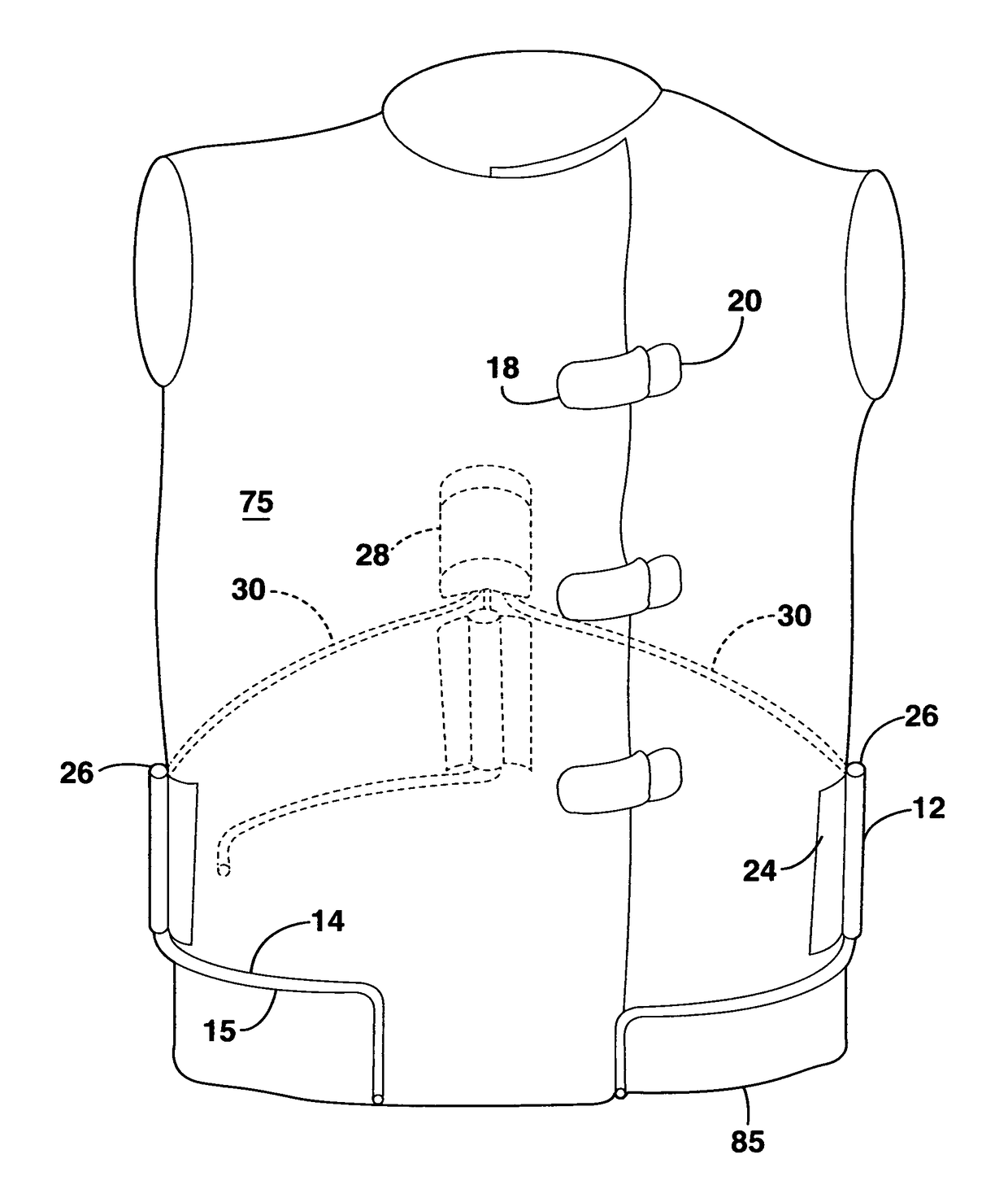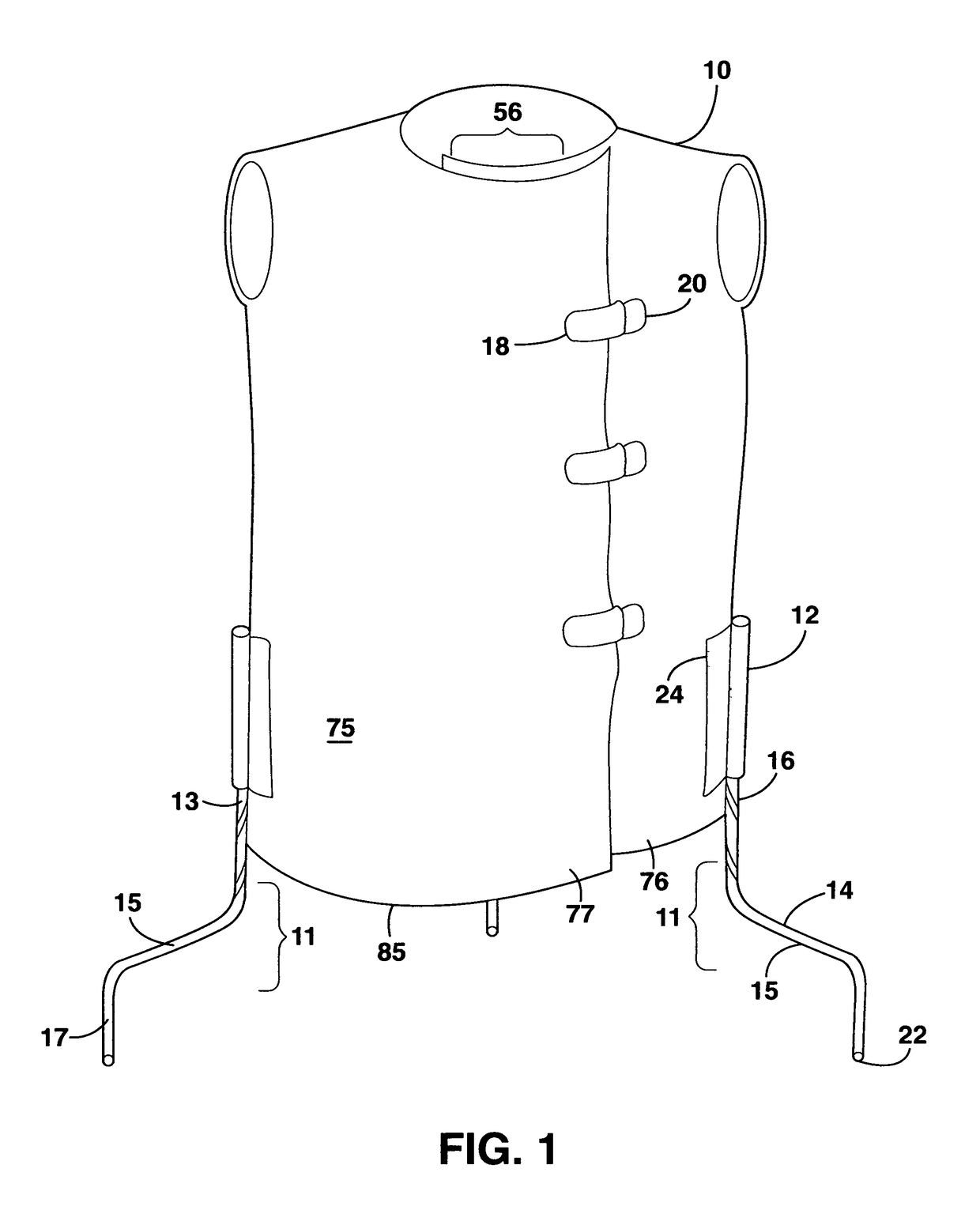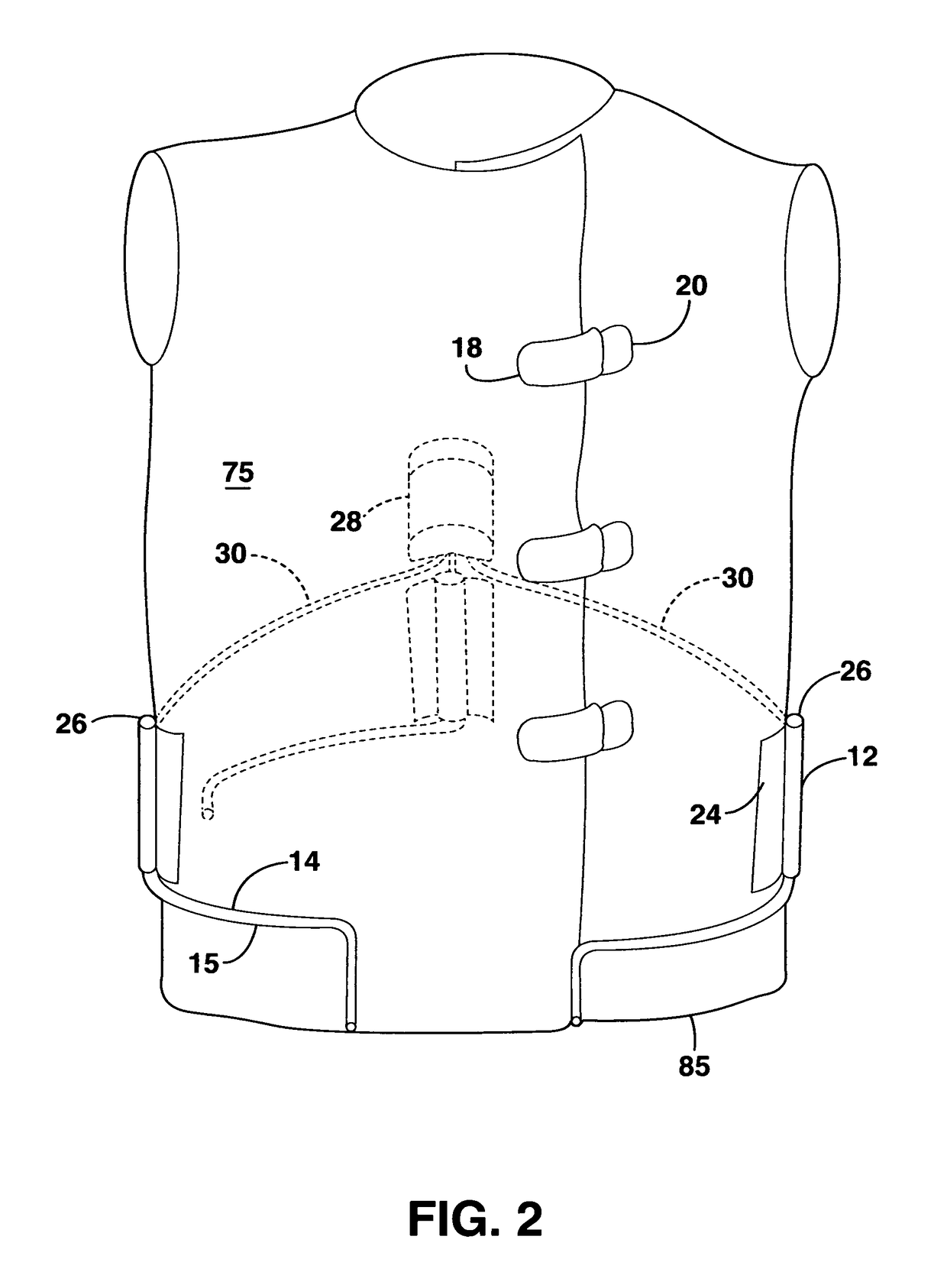Supported radiation protective garment
a radiation protection garment and supported technology, applied in the field of radiation shields, can solve the problems of limited operation radius of operators, difficult to achieve, and require existing catheterization laboratories, c-arms, other x-ray equipment to be retrofitted, etc., and achieve the effect of enhancing radiation protection for operators and less weigh
- Summary
- Abstract
- Description
- Claims
- Application Information
AI Technical Summary
Benefits of technology
Problems solved by technology
Method used
Image
Examples
first embodiment
[0068]FIG. 1 shows the present invention, generally labeled 10. The operator dons protective garment 10 in the standard fashion, the front portion shows and area of overlap of the layers of protective garment 10, providing added protection. Standard male (18) and female (20) parts of a buckle closure mechanism are illustrated, a plurality of buckle closure mechanism is suggested. Toward the lower portion of protective garment 10, vertical support means 11 are shown, having an attachment part 24 with which they are firmly attached to the fabric of protective garment 10, a fixed portion 12 and an extending portion 14. Extending portion 14 is divided into an upper vertical part 13, a horizontal part 15, and a distal vertical part 17. At the caudal end of distal vertical part 17 rolling means 22 are provided. A variety of standard rolling or sliding means can be used, including but not confined to a wheel attached to a rotating joint (similar to the wheels of a shopping cart), a rolling...
second embodiment
[0076]FIG. 8 shows the supported radiation protective garment, divided into a ‘protective apron part’46 and a ‘support base part’48. The advantage of this embodiment is its simplicity. This embodiment has fixed portions 12 of vertical support means 11, but lacks extending portions 14 of vertical support means 11. Instead, at the lower end of fixed portions 12 are female connectors 54 of protective apron part 46. Support base 48 consists of semi-circular joint member 50 securely connecting a plurality of extending portions 74 of support base 48, said extending portions 74 having at their upper end male connectors 52 and at their lower end rolling means 22. Protective apron part 46 is donned by the provider in the standard fashion, whereupon the provider performs the standard surgical handwashing procedure (if a sterile procedure is planned), and dons the usual sterile gown. Following this, an assistant positions support base part 48 around the provider, so that provider stands in the...
PUM
 Login to View More
Login to View More Abstract
Description
Claims
Application Information
 Login to View More
Login to View More - R&D
- Intellectual Property
- Life Sciences
- Materials
- Tech Scout
- Unparalleled Data Quality
- Higher Quality Content
- 60% Fewer Hallucinations
Browse by: Latest US Patents, China's latest patents, Technical Efficacy Thesaurus, Application Domain, Technology Topic, Popular Technical Reports.
© 2025 PatSnap. All rights reserved.Legal|Privacy policy|Modern Slavery Act Transparency Statement|Sitemap|About US| Contact US: help@patsnap.com



